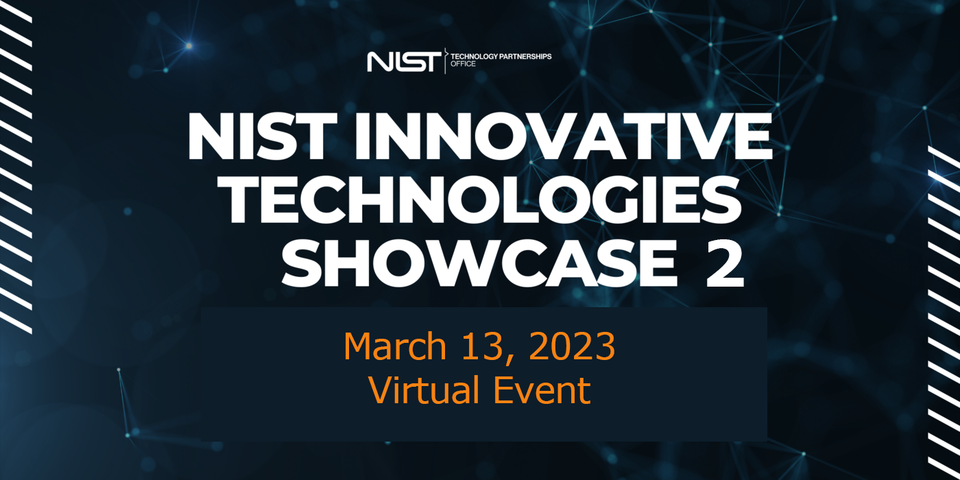
NIST’s second Innovative Technologies Showcase, a setting where three NIST researchers will present their latest and greatest technology, has gotten off to a roaring start one whole month before the event is scheduled to take place.
Almost 900 inventors, scientists, engineers, academics, and potential commercial partners have so far signed up to attend this Technology Transfer panel presentation. Every day brings new registrations to attend the Showcase on March 13th from 3:00 p.m. to 4:30 p.m. Eastern Time.
The extraordinary level of interest generated by this Showcase, which was designed and hosted by the Technology Partnerships Office, demonstrates the business community’s widespread recognition of the commercial and societal value of bringing NIST’s scientific research to the marketplace.
Three researchers from NIST’s Information Technology Laboratory (ITL) will present their technologies to the Showcase attendees. These technologies are ready to move from the bench to the next step of commercialization.
David Ferraiolo is a Computer Scientist and Group Manager for ITL’s Secure Systems and Applications Group. His presentation on cybersecurity will be “A Method and System for Centralized ABAC Policy Administration and Local Policy Decision and Enforcement Using Access Control Lists.” The technology, developed by David Ferraiolo, Gopi Katwala, and Serban I. Gavrila, details a method that centrally manages Attribute-Based Access Control (ABAC) policies and locally computes and enforces decisions over those policies on resource repositories that are locally protected in host systems using host Access Control Lists (ACLs). The method is founded on the expression of an ABAC policy, based in part on objects and object attributes that conform to the access control rules of an enterprise, and leverages the ABAC policy expression by introducing representations of local repositories into the ABAC system as objects and object attributes. Repositories may be comprised of individual files, directories, or other resources that require protection. The method further maintains a correspondence between the ABAC representations and repositories in local host systems. The method also leverages an ability to conduct policy analytics in such a way as to formulate ACLs for those representations in accordance with the ABAC policy and creates ACLs on repositories using the ACLs of their corresponding representations. As the ABAC policy configuration changes, the method updates the ACLs on affected representations and automatically updates corresponding ACLs on local repositories. Operationally, users attempt to access resources in local host systems, and the ABAC policy is enforced in those systems in terms of the methods managing ACLs.
Mei Lee Ngan, a Computer Scientist in ITL’s Information Access Division, will present “A Methodology for Detecting Face Morphing Using One-to-Many Face Recognition Algorithms.” Face morphing is a form of identity fraud that is a known vulnerability to those automated face recognition and identity credentials, such as passports, that leverage face recognition. Face recognition algorithms will often erroneously match the manipulated image (morph) with the multiple people that contributed to the morph. This research has developed a morph detection method that uses one-to-many face recognition algorithms to detect the presence of face morphing and presents a novel departure from other existing morph detection techniques. The approach developed by Mei Lee Ngan, Kayee Kwong Hanaoka, and Patrick Joseph Grother generates reduced false detection rates that are better than any conventional morph detection algorithm published in the academic literature and evaluated in independent third-party tests.
After these technologies have been discussed, a panel will describe how collaborative efforts with NIST researchers and licensing opportunities with NIST can be pursued and arranged.
The Innovative Technologies Showcase programs advance NIST’s mission of bringing the results of federal scientific and technological research from the Lab to the Marketplace.
https://www.nist.gov/news-events/news/2023/03/hundreds-sign-upcoming-nist-innovative-technologies-showcase-2


